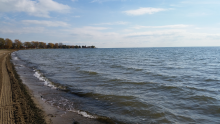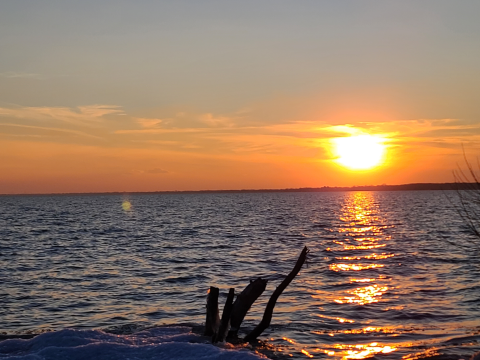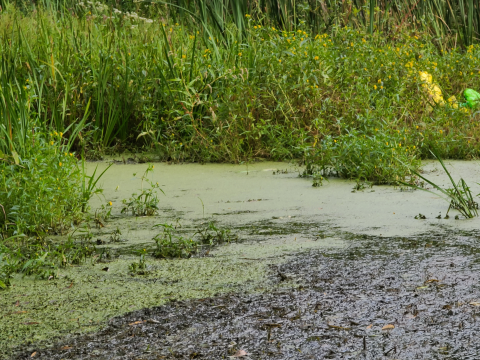
Macomb County has approximately 32 miles of Lake St. Clair shoreline, three beaches located on Lake St. Clair, and two additional inland lake beaches. To assure residents and visitors of a safe and healthy recreational experience, the Macomb County Health Department conducts routine water quality testing from April through September each year. Water samples are tested for Escherichia coli (E. coli) bacteria.
Beach conditions
Beach testing by the Macomb County Health Department has ended for the 2023 recreational season. Testing will resume in April 2024.

Open- 5/1/2024

Open- 5/1/2024

Open- 5/1/2024

Open- 5/1/2024

Open- 5/1/2024

Why is the beach closed?
The Macomb County Health Department will close a beach if the water sample bacteria level exceeds the Total Body Contact Standard established in the Michigan Public Health Code. The beach is re-opened once the bacteria level falls back down to acceptable levels. The Macomb County Health Department has been working cooperatively with the state and other agencies to develop a faster testing method, EPA qPCR Method C for E. coli.
Sampling procedures and standards
E. coli is a bacteria naturally found in the intestinal tracts of humans and other animals. The presence of E. coli in the water indicates possible contamination with human or animal waste.
Samples are collected twice weekly and, in accordance with established procedures, are collected one foot below the surface in water that is three to six feet deep. A minimum of three samples are collected at a beach during each visit.
Collected samples are brought to a laboratory that has been certified by the Michigan Department of Environment, Great Lakes and Energy for analysis. The Idexx Colilert System is used for sample analysis.
The Macomb County Health Department uses the Geometric Mean in estimating a 30-day average from individual samples taken during five or more sampling events. A Geometric Mean is another way to average a set of values. It is commonly used with parameters such as bacterial water assessment, which show a great deal of variability, in order to reduce the effect that occasional high or low values have on the average. Technically, the Geometric Mean is calculated by taking the nth root of the multiplication product of a string of e. coli data, where n equals the number of sample results.
Example: Given three sample results (colonies/100ml) of 20, 80, 40
- Calculation: 20 x 80 x 40 = 64,000
- Since there are three sample results, we take the 3rd root of 64,000 which is 40 colonies per 100 milliliters.
- If there were 10 sample results, the geometric mean would be the 10th root of the product; 20 samples would be the 20th root, and so on.
Total Body Contact standards for E. coli are in effect May 1 - Oct. 31 each year during the beach-going season to protect people when they are most likely to immerse their entire body in water for recreation. Sample results are compared to these standards contained in Part 125 of the Michigan Public Health Code which are as follows:
-300 E. coli colonies per 100 milliliters, as a geometric mean of all samples collected at a beach during one sample event;
-130 E. coli colonies per 100 milliliters, as a geometric mean of all samples collected over a 30-day period.
Depending on which standard is exceeded at a bathing beach, the owner/operator is contacted and instructed to close the beach or issue a public health advisory.

Historical beach testing data
The following historical beach data is available for reference. Please locate the beach of interest and click on the desired year.
For individual site sample results and beach monitoring data for Michigan go to Michigan BeachGuard System.
To help locate and eliminate sources of E. coli bacteria and predict the occurrence of beach water quality problems, the Macomb County Health Department also monitors water quality at numerous sites along the Clinton River Watershed.
Check out this video from the Michigan Department of Environment, Great Lakes, and Energy on E.coli.
Algae and HABs
Algal blooms can occur in bodies of fresh water. This includes ponds, streams, and lakes. Some algal blooms, called harmful algal blooms (HABs) can produce toxins to humans, pets and wildlife. Blooms are typically a result of high nutrients in the water, warm temperatures and lots of sunlight. If you see a bloom, it is recommended to stay out of the water, including your pets. Michigan's Department of Environment, Great Lakes and Energy monitor for HABs and is a great resource for information.

Additional resources
- Huron-Clinton Metro Authority
- New Baltimore Beach Park
- St. Clair Shores Parks and Recreation
- Center for Disease Control - healthy swimming information
- Great Lakes Information Network - regional watershed information
- Environmental Protection Agency - beach standards and national monitoring
- Clinton River Watershed Council
- Southeast Michigan Council of Governments (SEMCOG)
Contact the Environmental Health Services Division
Mount Clemens: 586-469-5236 | Email: environmental.health@macombgov.org






